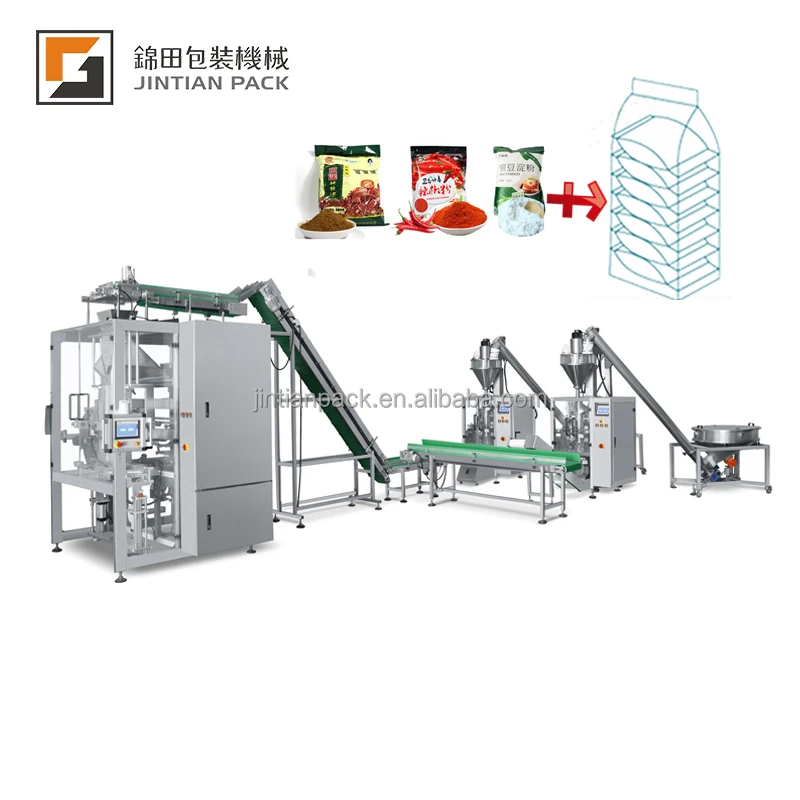Automated processing systems significantly boost the throughput of food products by reducing processing time by up to 30%. State-of-the-art food packaging machines, designed for optimal speed and efficiency, facilitate high-volume production while maintaining quality standards. By incorporating high-speed automation technology, manufacturers can effectively eliminate bottlenecks in the production line, ensuring a smoother workflow and enhanced productivity. This advancement not only accelerates the manufacturing pace but also allows businesses to meet increasing consumer demands with ease.
Automation in food manufacturing has greatly reduced the dependency on manual labor, leading to a decrease in operational costs associated with wages and training. For instance, automated systems in the packaging process, such as food bagging machines, minimize human intervention, effectively lowering the risk of errors and enhancing product quality. A study by the National Association of Manufacturers highlights that businesses adopting automation experience an average reduction in labor costs by about 20%. This shift towards automated systems contributes to increased labor efficiency, enabling companies to allocate resources towards other critical areas of business growth.
Automated packaging systems are vital in creating contamination-free environments, crucial for maintaining safety standards in food production. These systems are designed with materials that are easy to clean and maintain, reducing the possibilities of contamination and ensuring compliance with stringent safety regulations. According to research, businesses employing automation in food packaging report a 25% reduction in contamination incidents compared to traditional methods. This significant drop highlights the efficiency of automated systems in maintaining hygiene standards, a critical factor in preventing costly product recalls.
Automation significantly aids in adhering to food safety regulations by ensuring consistency and reliable data recording. Automated systems can be preprogrammed with presets that align with FDA and international food safety standards, thereby enhancing compliance rates. These systems streamline processes, eliminate human errors, and ensure that the handling practices adhere to regulatory standards. Experts from the Food Safety and Inspection Service indicate that automation in food manufacturing reduces audit failures related to improper handling practices, creating a safer food production environment while facilitating smoother audits.
Automation in food packaging leads to significant labor and material waste reduction. By utilizing precise measurements and efficient packaging processes, automated systems dramatically cut down on material waste. For instance, companies employing automated sachet packing machines report a decrease in waste by up to 40%. This reduction not only enhances profitability but also allows businesses to allocate resources more sustainably for the long term. In the competitive realm of food packaging, such cost-effective solutions help manufacturers stay ahead by ensuring more efficient use of resources.
Investing in automated packaging solutions presents a significant long-term return on investment for food manufacturers. Many in the industry witness a payback period of under three years. For example, analytics demonstrate that adopting automation can decrease production costs by 15-30%, thereby boosting overall profitability. Experts predict that the shift toward automation will persist, underlining the need for manufacturers to modernize to maintain a competitive edge. Embracing these technologies is not only an investment in advanced packaging but also a strategic move to excel in the evolving marketplace of food processing.
Full automatic bundling systems offer unparalleled flexibility in handling various bag sizes, making them an optimal choice for businesses seeking efficiency in packaging processes. These systems employ advanced techniques to enhance both speed and accuracy, significantly increasing throughput across diverse product lines. By integrating cutting-edge technology such as sensors and sophisticated software, the bundling process is streamlined to minimize errors and maximize output. This efficient packing solution not only improves operational efficiency but also aligns with modern demands for versatile packaging solutions.

Automated packaging lines dedicated to washing powders are engineered to efficiently handle high volumes, fulfilling demand requirements without sacrificing product quality. The incorporation of precise dosing mechanisms ensures that each package contains the exact amount, reducing complaints and enhancing consumer satisfaction. Efficiency analysis suggests such high-capacity lines improve operational speeds by as much as 40% over traditional manual packing methods, making the investment in automation a logical choice for forward-thinking companies focused on scalability and quality.

Stand-up pouch packaging is increasingly popular due to its ability to combine aesthetic shelf appeal with functional accuracy in dosing, facilitated through automated filling systems. The format accommodates a wide range of powder products, aligning with diverse consumer preferences and market trends. Research indicates that products packaged in stand-up pouches enjoy a 20% higher marketability, attributed to their convenience and ease of use for consumers—a clear advantage for companies seeking to boost product engagement and market reach.
